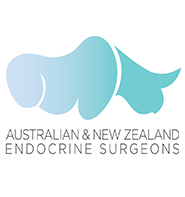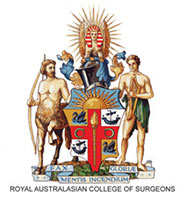Adrenal Surgery
 The adrenal glands are two endocrine glands situated on top of the kidneys and are important for hormone regulation…
The adrenal glands are two endocrine glands situated on top of the kidneys and are important for hormone regulation…
Each gland consists of a medulla (the centre of the gland) and is surrounded by the outer cortex. The medulla is responsible for producing adrenalin and noradrenaline. These hormones help to control the blood pressure in the body. The cortex produces hormones necessary for fluid and electrolyte (salt) balance in the body and cortisol to balance stress levels.
Adenomas
Sometimes the adrenal glands may develop (non-cancerous) nodules or tumours. These nodules can either produce excess hormones (functioning adenomas) or have no affect at all (non-functioning incidentaloma). Very rarely adrenal nodules can progress into cancers. Larger adrenal nodules and ones with suspicious appearance on a CT scan may need to be removed.
Most patients do not notice symptoms of an adrenal adenoma and many are incidentally found on routine imaging. These can usually be simply monitored without the need for surgery. Functioning adenomas however can cause a number of different syndromes. These are:
- Cushing’s syndrome
- Conn’s syndrome
- Phaeochromocytoma
Cushing’s syndrome
This syndrome occurs when adrenal adenomas produce too much of the hormone cortisol. Excessive amounts of cortisol in the body can cause:
- Hypertension
- Excessive sweating
- Weight gain
- Insulin resistance
- Facial hair
- Fragile skin
- Moon-like face
Conns syndrome
Also known a hyperaldosteronism, Conn’s syndrome occurs when an adrenal adenoma is producing excessive amounts of the hormone Aldosterone. The main function of Aldosterone is to increase re-absorption of salt and water in the kidney which in turn can cause high blood pressure and results in hyperaldosteronism. Increased aldosteronism in the body can result in:
- Hypertension (high blood pressure)
- Muscle weakness
- Low potassium levels
Phaeochromocytoma
A phaeochromocytoma is a neuroendocrine tumour of the adrenal gland that secretes excessive amounts of catecholamines, usually noradrenalin and adrenaline. Up to 25% of phaeochromocytomas may be hereditary and approximately 80% are solitary and unilateral (only found on one side). Common symptoms include:
- Increased blood pressure
- Increased heart rate
- Palpitations
- Anxiety
- Headaches
- Excessive sweating
Posterior Retroperitoneal Adrenalectomy
Dr Sywak is also experienced in posterior retroperitoneoscopic adrenalectomy, a new approach to adrenal surgery which allows minimally invasive removal of adrenal tumours through the back with less post-operative pain.
Treatment
Large adrenal lesions and functioning adenomas are best treated with surgery. Most cases can be performed using a laparoscopic surgical technique which allows minimal scarring and a shorter hospital stay. A patient undergoing adrenalectomy can expect the following:
- 2 nights in hospital
- 10 days recovery
- 3 – 4 small scars on the abdomen for laparoscopic procedures
For specialists in thyroid, parathyroid and adrenal surgery, contact Sydney Endocrine Surgery by clicking here.


 The adrenal glands are two endocrine glands situated on top of the kidneys and are important for hormone regulation…
The adrenal glands are two endocrine glands situated on top of the kidneys and are important for hormone regulation…









